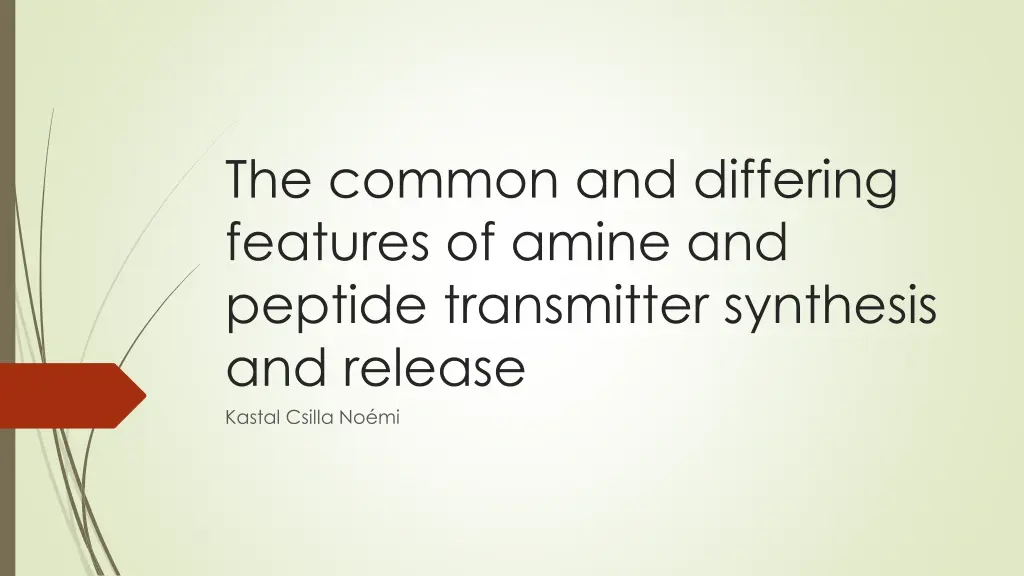
Features of Amine and Peptide Transmitter Synthesis and Release
Explore the common and differing features in the synthesis and release of amine and peptide neurotransmitters. Understand the life cycle of neurotransmitters and distinguish between classic amine and non-classic peptide types. Dive into the processes of synthesis, packaging, release, and degradation of these essential molecules.
Download Presentation

Please find below an Image/Link to download the presentation.
The content on the website is provided AS IS for your information and personal use only. It may not be sold, licensed, or shared on other websites without obtaining consent from the author. If you encounter any issues during the download, it is possible that the publisher has removed the file from their server.
You are allowed to download the files provided on this website for personal or commercial use, subject to the condition that they are used lawfully. All files are the property of their respective owners.
The content on the website is provided AS IS for your information and personal use only. It may not be sold, licensed, or shared on other websites without obtaining consent from the author.
E N D
Presentation Transcript
The common and differing features of amine and peptide transmitter synthesis and release Kastal Csilla No mi
Life cycle of the neurotransmitters Neurotransmitters: substances, produced by neurons, for the purpose of transmitting information between two nerve cells 2 groups: 1. Classic amine type 2. Non-classic peptide type Life cycle of the neurotransmitters Synthesis Packaging into vesicles Vesicle fusion release Activation of postsynaptic receptors Degradation or reuptake
Classic amine neurotransmitters Enzyme and storage vesicle synthesis Transport to the Golgi apparatus Slow axonal transport Neurotransmitter synthesis and packaging Vesicle fusion and release Neurotransitter degradation Reuptake
Peptide neurotransmitters Polypeptide, precuror, enzyme and vesicle synthesis Enzyme and propeptide packaging Fast axonal transport Propeptide modification Vesicle fusion and exocytosis Neurotransmitter degradation No reuptake
Classic transmitters Non-classic transmitters Molecular weight Less than 200 More than 300 Synthesis Cell body Slow axonal transport 1. Synthesizing enzymes 2. Storage vesicles Fast axonal transpor 1. Storage vesicles Axonal transport 1. Cell body 2. Local synthesis 3. Reuptake Supply of constituents Cell body Vesicles 40-50 nm 80-200 nm Reuptake Yes No
